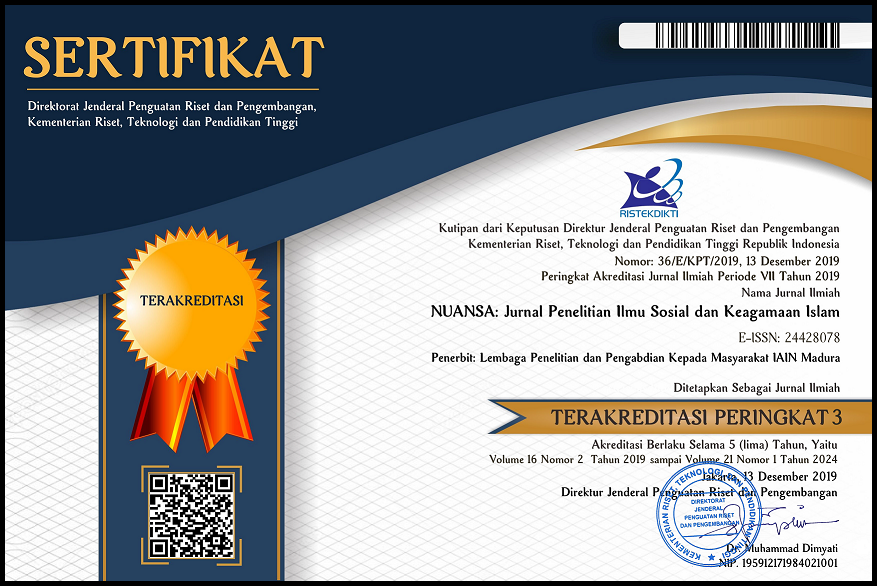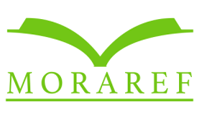KEMAMPUAN ARTIKULASI BUNYI BAHASA ARAB PADA ANAK TUNARUNGU (Studi Kasus di SLB Negeri Sampang)
 Abstract views: 638
,
Abstract views: 638
,
 PDF downloads: 882
PDF downloads: 882
Abstract
Downloads
References
Eli Soliha, “Penggunaan Media Kartu Huruf Hijaiyyah Dalam Meningkatkan Kemampuan Membaca Iqro’ Jilid 1 Pada Anak Tunarungu”, (Skripsi, Universitas Pendidikan Indonesia, Bandung, 2012)
Kesuma, Tri Mastoyo Jati. Pengantar (Metode) Penelitian Bahasa. Yogyakarta: Carasvatibooks, 2007
Nasution, Ahmad Sayuti Anshari. Bunyi Bahasa.,Jakarta: Amzah, 2010
Ririn Fidiawati, “ Peningkatan Kemampuan Artikulasi Melalui Metode Drill Pada Drill Pada Anak Tunarungu Kelas Dasar II di SLB-B YPPALB Kota Magelang”, (Skripsi, Universitas Negeri Yogyakarta, Yogyakarta, 2012)
Sadja’ah, Edja . Bina Bicara, Persepsi Bunyi dan Irama, Bandung: PT. Refika Aditama, 2013
Somantri, Sutjihati. Psikologi Anak Luar Biasa, Bandung: PT. Refika Aditama, 2012
Tati Hernawati, “Pengembangan Kemampuan Berbahasa dan Berbicara Anak Tunarungu”, Jassi_anakku, Volume 7 Nomor 1 (Juni, 2007)
https://psibkusd.wordpress.com/about/b-tunarungu/metode-pengajaran-bahasa-bagi-anak-tunarung/
The journal operates an Open Access policy under a Creative Commons Attribution-NonCommercial 4.0 International License (CC-BY-NC) 
Authors who publish with this journal agree to the following terms:
- Authors retain copyright and grant the journal right of first publication with the work simultaneously licensed under a Creative Commons Attribution License that allows others to share the work with an acknowledgement of the work's authorship and initial publication in this journal.
- Authors are able to enter into separate, additional contractual arrangements for the non-exclusive distribution of the journal's published version of the work (e.g., post it to an institutional repository or publish it in a book), with an acknowledgement of its initial publication in this journal.
- Authors are permitted and encouraged to post their work online (e.g., in institutional repositories or on their website) prior to and during the submission process, as it can lead to productive exchanges, as well as earlier and greater citation of published work.






















